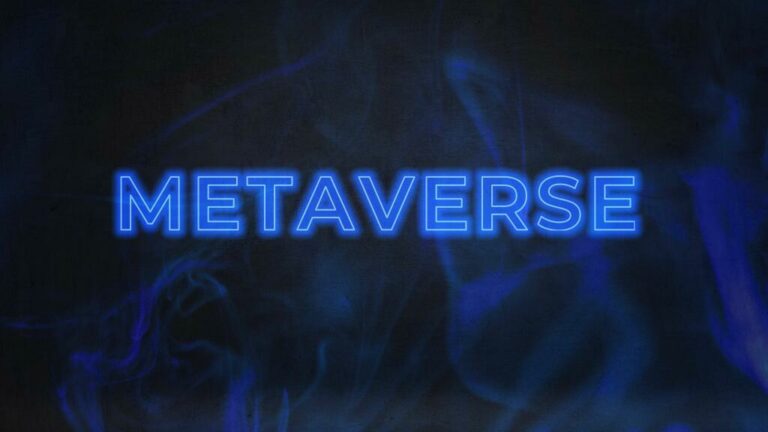This characteristic enables the distribution of escalations throughout numerous groups. User roles and permissions are assigned and managed at the Grafana organization or Cloud portal degree. There are two ways to handle person roles and permissions for Grafana OnCall. Grafana Cloud OrganizationsA Grafana Cloud Organization is totally different from a Grafana Org. A Grafana Cloud Organization often represents an entire firm, and it might possibly contain multiple stacks as nicely as centralized user administration and billing.
remove certain Grafana OnCall RBAC roles. Data supply permissions permit the customers entry to question the information source. All the groups and users which are a part of the information supply inherit those permissions. When you create a user they are granted the Viewer function by default, which implies that they won’t be capable of make any changes to any of the assets in Grafana.
Manage Useful Resource Entry With Folders
We additionally plan to improve Grafana’s provisioning, APIs, and as-code performance, to make it simpler to manage resources between Instances. If you could have already grouped some customers right into a team, then you’ll have the ability to synchronize that team with an external group. Currently the synchronization solely happens when a user logs in, except LDAP is used with the lively background synchronization that was added in Grafana 6.three. Complete this task whenever you want to add or modify staff member permissions. For this instance, you presumably can log in as the user luc.masson to see that they will only entry the web optimization dashboard. However, there are times when you need to configure permissions on a extra granular stage.

It’s really helpful that you simply create a single Loki knowledge source for using Team LBAC rules so you have a clear separation of knowledge sources using Team LBAC and those who aren’t. You should create one other Loki knowledge supply configured with out Team LBAC for full entry to the logs. This section displays an inventory of teams, allowing you to configure group visibility and access to team sources for all Grafana users, or solely admins and group members. You also can set a default group, which is a user-specific setting; the default group might be pre-selected every time a person creates a new resource.
Add A Staff Member
Teams is a simple organizational device to manage, and permits versatile sharing between groups. Add a member to a new Team or add a team member to an present Team when you need to provide entry to group https://www.globalcloudteam.com/tech/grafana/ dashboards and folders to a different person. This task requires that you’ve organization administrator permissions. Because groups exist inside a corporation, the organization administrator can manage all groups.
If you configure a quantity of rules for a group, every rule is evaluated individually. Graphona, a fictional telemarketing company, has asked you to configure Grafana for his or her teams. While in college, Raj based Voxel, a cloud and hosting firm acquired by Internap in 2012. His two great passions are observability and aviation; he received his non-public pilot’s license virtually 20 years ago and has accomplished his motorglider score.

Additionally, operators of Grafana need a system that’s simple to manage and automate by way of provisioning and APIs. A team is a bunch of customers inside a corporation that have frequent dashboard and data source permission wants. For example, instead of assigning five customers entry to the same dashboard, you’ll be able to create a team that consists of those users and assign dashboard permissions to the team. If you wish to share resources between a number of instances, you’ll need to make use of the API or provisioning for synchronization. It can be more time-consuming and complex to handle multiple situations and stacks.
Grafana Situations And Grafana Cloud Stacks
When the editors_can_admin setting is enabled, editors can create teams and manage teams that they create. For extra information about the editors_can_admin setting, discuss with Grant editors administrator permissions. RBAC for Grafana plugins allows for fine-grained access control so you can define custom roles and actions for users in Grafana OnCall. Use RBAC to grant specific permissions within the Grafana OnCall plugin with out altering the user’s basic role on the group stage. You can fine-tune primary roles to add or
- Several structures exist within Grafana to arrange assets and permissions.
- Complete the Create customers and teams tutorial to learn to set up users and teams.
- If you are working Grafana Enterprise, for some endpoints you’ll need to have specific permissions.
- Visit the Grafana developer portal for tools and assets for extending Grafana with plugins.
When you add a person to a group, they get entry to all resources assigned to that staff. RBAC supplies you a method of granting, altering, and revoking user learn and write access to Grafana assets, similar to customers, reports, and authentication. Data source permissions allow you to restrict information source query permissions to particular Users, Service Accounts, and Teams.
Recommended Setup
For extra information about assigning data supply permissions, refer to Data source permissions. To assign or remove server administrator privileges, see Server person administration. You can grant permissions to groups which apply to all members of that team. (I’ll use “team” to check with an precise group of individuals, and “Team” with a capital T to refer to the Grafana concept of Team, which groups users). Team sync enables you to set up synchronization between your auth providers groups and teams in Grafana.
An group is an entity that exists within your occasion of Grafana. For instance, a consumer with the fundamental Viewer function on the group stage needs to edit on-call schedules. You can assign the Grafana OnCall RBAC function of Schedules Editor to allow the user to view every little thing in Grafana OnCall, in addition to allow them to edit on-call schedules. In our February webinars, Grafana Labs professionals provide the basics and finest practices for observability, on-call administration, distributed tracing, and…
For instance, you’ll find a way to create an integration in a single team, arrange a number of routes for the integration, and make the most of escalation chains from other groups. Users, schedules,
Currently you probably can place dashboards, library panels, and alerts into folders (but not other resources like knowledge sources, annotations, stories, or playlists). You can create, view, edit, or admin permissions for folders that apply to all the assets inside them. If you might have access to the Grafana server, you probably can modify the default editor role so that editors can use administrator permissions to handle dashboard folders, dashboards, and groups that they create. Grafana recommends you employ Teams to organize and handle access to Grafana’s core assets, corresponding to dashboards and alerts.
This action permanently deletes the staff and removes all staff permissions from dashboards and folders. It’s a good apply to make use of folders to arrange collections of related dashboards. You can assign permissions at the folder degree to particular person customers or teams. This tutorial is for admins or anybody that wishes to discover methods to manage users in Grafana.
⚠️ In the principle Grafana teams part, customers can set team-specific consumer permissions, corresponding to Admin, Editor, or Viewer, but only for resources within that staff. Currently, Grafana OnCall ignores this setting and uses world roles as an alternative.

You can repeat these steps to log in as the other customers you’ve created see the variations in the viewer and editor roles. You’ve created a brand new user and given them distinctive permissions to view a single dashboard within a folder. Teams let you grant permissions to a group of customers, instead of granting permissions to particular person customers separately.
Secure Grafana Groups
This permits LDAP, OAuth, or SAML customers who’re members of certain teams or teams to automatically be added or eliminated as members of certain teams in Grafana. The most essential factor to suppose about for securing Teams is to solely grant team administrator rights to the customers you belief to administer the Team. By default, whenever you create a folder, all users with the Viewer position are granted permission to view the folder. Graphona has asked you to add a group of early adopters that work in the Marketing and Engineering groups. They’ll need to be able to edit their own team’s dashboards, however want to have view entry to dashboards that belong to the other team. Complete the Create users and groups tutorial to learn how to arrange customers and groups.
A Grafana Team is a bunch of customers inside a corporation that have frequent permissions, including access to dashboards and knowledge sources, and those permissions apply to all members of that team. For instance, instead of assigning six customers entry to the identical dashboard, you probably can create a team that consists of these users and assign dashboard permissions to the group. The most important limitation is that only certain resources may be placed into folders, and due to this fact access-controlled using folder permissions. Some assets, like knowledge sources, have their very own permissions that may be granted to Teams, but others don’t. If users create annotations, reports, alert notification channels, API keys, Snapshots, or Playlists, these resources are shared throughout all Teams.
Now you’ll find a way to carry out a test run and will get an alert of check notification on Teams. To streamline incident response and cut back administrative tasks, you can use the following @Grafana IRM incident commands within Microsoft Teams. These commands help your team focus on what’s important without having to switch between a number of windows or update stakeholders manually. For more information about RBAC, refer to Role-based access control. A consumer expertise firm currently sets up a Grafana Org for every team that onboards to Grafana. This module is a part of the group.grafana assortment (version 1.9.1).
